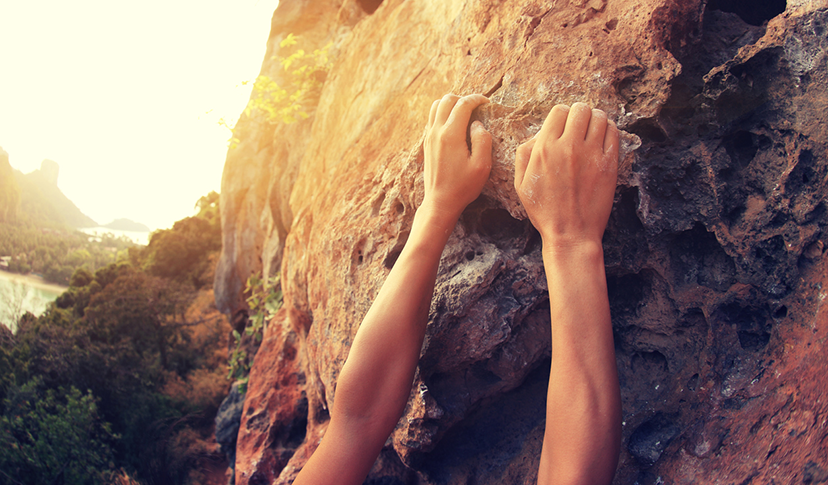Maximizing Your Motivation And Developing Grit
After a year of canceled races and uncertainty, we are once again seeing more canceled events this winter and spring. With no events on the horizon, these unprecedented times have us asking ourselves- why should we get on our bikes in 30-degree weather and suffer? We are having to dig deep inside and find other forms of motivation. In over 20 years of racing and coaching, I have found that motivation is the most important factor in whether or not an athlete reaches their goals. If the athlete is 100% motivated for every training session and race, they will be focused, confident, and prepared. But most importantly, they will be having fun!
As competitive athletes, there are 3 things that can affect how well we perform: natural talent, competition, and motivation. Of these three things, motivation is the only thing we can control. Natural talent is something you are born with and includes your physical, technical, tactical, and mental capabilities. The competition includes the ability level of the opponent(s), and other external factors like weather, support, and equipment. You have no control over the competition. Motivation, however, is 100% controllable and it will directly impact the level of success you will achieve. A highly motivated athlete will prioritize their sport and put in the time and effort it takes to reach their goals. Motivation also influences the level of performance when you begin a competition. If you’re competing against someone with near or equal skill, then the athlete who is the most motivated in training will perform with more grit, determination, and resilience than their opponent.
So what happens when you lack motivation? Is your season over and it’s time to give up and move on to something else? Heck no! It is completely normal to have days when you are not feeling excited about training or racing. The trick is to minimize these days and cultivate a strong sense of awareness for this lack of motivation and have the tools needed to deal with it.
GRIT
In training and competition, there is often a point where it is no longer fun. You’re exhausted, everything hurts, and your motivation to keep turning the pedals is low. This is the moment when you have to search deep inside yourself and find your inner grit. The amount of grit is what separates athletes who succeed and those that don’t. Many athletes when they reach this point either ease up or give up because it’s too hard to continue. They lack the grit it takes to push through the pain. Every time an athlete comes face to face with this moment and continues to push through it builds more and more grit. They become more resilient to fatigue, pain, and deepen their well of endurance. Grit is what it takes to stay motivated in the darkest of times- when it’s freezing cold and snowing outside, when every muscle and bone in your body aches and your mind is yelling at you to stop. When you run out of food and bonk, when you crash and you’re bleeding, when your bike breaks, the number of reasons to quit are endless and it’s the athlete with the most grit that will not listen to these reasons. So how does one develop grit? In every moment grit is required the athlete must ask themself why they should continue. What is their motivation to not quit? Let’s dive a little deeper into types of motivation- Intrinsic and Extrinsic.
Intrinsic Motivation
Intrinsic motivation is when you engage in a behavior because it is personally rewarding and not for an external reward. Most athletes are intrinsically motivated to do their sport because they love it and it makes them happy. The intrinsically motivated athlete fosters more of a growth mindset and enjoys the journey. The sport gives them a higher sense of purpose, self-expression, and most importantly is fun! Intrinsically motivated athletes tend to compete in their sport longer than extrinsically motivated athletes. This never stop learning attitude lends to a mastery approach and motivation to always be better. The athlete focuses more on the process than the end result. However, there can be a negative effect to this type of motivation if the athlete feels guilt, shame, or lack of self-worth for not completing a workout or for any failures. It is important for the athlete to not tie their self-worth completely on the success of their sport.
Extrinsic Motivation
Extrinsic motivation is when the athlete is motivated to perform the activity to earn a reward, gain a result, money, or praise. This type of motivation is “surface level”, less process focused and more focused on the end result. Extrinsic motivation can be fleeting because if the athlete does not achieve their desired end result they feel like they failed and it can often lead to burnout and quitting. However, extrinsic motivators can be used to successfully boost intrinsic motivation. For example- in martial arts, the grading system is based on earning a tangible achievement-a higher belt with the aim of motivating them to continue.
In order to develop a strong sense of grit, an athlete must be both highly intrinsically and extrinsically motivated. They must have the desire to win not just for the purpose of standing on the top step of the podium, winning money, gaining sponsorship and notoriety, but because they have a deep love and passion for the sport, self-improvement, and find pleasure in the activity. The athlete who can draw from these motivators on a daily basis will develop a bottomless well of grit and resilience to draw from when training gets arduous and motivation levels are low.
If you are having trouble finding motivation with no races on the horizon, lacking a sense of drive, or just have a case of S.A.D. (seasonal affective disorder), reach out to me. Let’s work together to maximize your motivation and unleash your inner grit!
X
